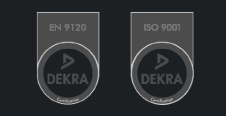Welding processes.
TIG Welding
Tungsten Inert Gas, Gas Tungsten Arc Welding GTAW by American standards or process 141 according to ISO 4063
An electric arc is established between the end of a refractory tungsten electrode (which may be pure tungsten, thoriated and 1% or 2% thereof enZirconium but exclusively for the welding of aluminum) and the workpiece under the protection of an inert gas (argon, helium-argon mixture héliumou). The filler metal is added if necessary in the form of a rod or strip placed in the melt and should not cross the arc or come in contact with the electrode tip. This process can be automated or even robotizing in the frequent case of orbital TIG welding.
MIG-MAG Welding
Metal Inert Gas-Metal Active Gas, Gas Metal Arc Welding GMAW according to US standards or process 131 (MIG) or 135 (MAG) according to ISO 4063
An electric arc is established between the end of a consumable electrode and the workpiece, under the protection of a gas mixture whose nature depends on the type of weld produced. The electrode feed automatically continuously from a reel, is in the form of a solid or cored wire.
Orbital Welding
Orbital welding is a welding method in which a special arc rotates continuously at least 360 ° around a fixed part (cylindrical component such as a tube).
Laser welding
LBW : Laser Beam Welding
Energy is supplied in the form of a laser beam. The laser sources can be CO2 or YAG, LED or fiber.
Principle of laser welding
An optical system focuses the laser energy beam (105 W / cm to 106 W / cm²) and generates a capillary filled with metal vapors, whose walls are covered with liquid molten metal. The melt created is moved and the liquid metal resolidifies after passage of the beam providing continuity between the metal pieces.
Soudage plasma
PAW : Plasma Arc Welding
Considered as an evolution of TIG welding, it is distinguished by the fact that the arc is forced mechanically (mechanical constriction) or pneumatically (pneumatic constriction), generating a higher energy density. The arc may well between the nozzle and electrode (non-transferred arc) or between the electrode and the workpiece (transferred arc) or semi-be transferred. The plasma welding can be performed without a chamfer on assembly butt tenth of mm to thicknesses of 8 mm. In this case, it requires very little solder. It is almost exclusively used in automated mode (robot) and the welding speeds are high (tens of centimeters per second). This method allows soldering temperatures up to 18,000 ° F.
It can weld “black” steel, stainless steel and aluminum
Electron beam welding
EBW : Electron Beam Welding
Uses the kinetic energy of projected in a vacuum chamber and focused on the workpiece to create a molten zone electrons.



